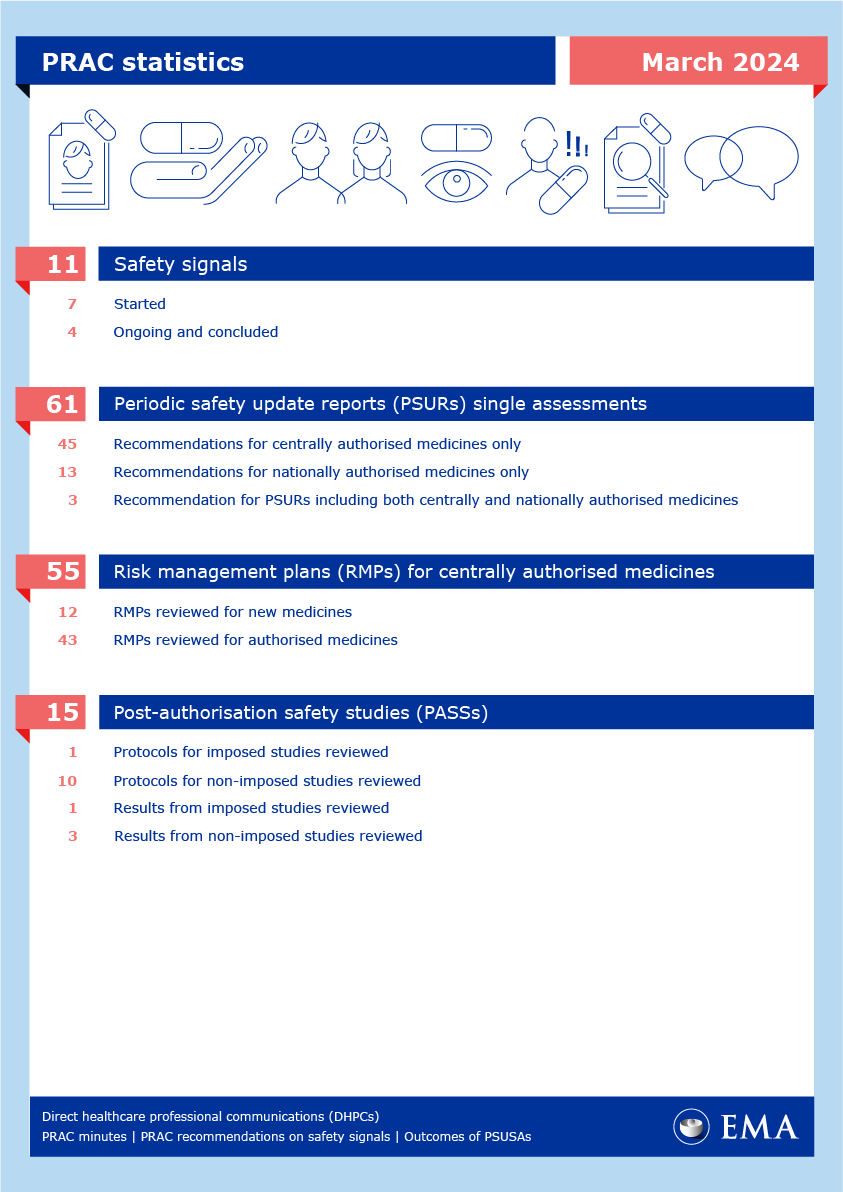
Meeting highlights from the Pharmacovigilance Risk Assessment Committee (PRAC) 4-7 March 2024
NewsHumanCOVID-19MedicinesPharmacovigilanceReferrals
EMA’s safety committee (PRAC) concluded that there was insufficient evidence to establish a causal association between the COVID-19 vaccines Comirnaty and Spikevax and cases of postmenopausal bleeding.
Postmenopausal bleeding is commonly defined as vaginal bleeding occurring one year or more after the last menstrual period. Postmenopausal bleeding is always considered abnormal and can be a symptom of serious medical conditions.
Recently, new information emerged from the medical literature as well as post-authorisation data that prompted investigation into postmenopausal bleeding with the two vaccines.
The PRAC assessed all available data, including findings from literature, and available post-marketing spontaneous reports of suspected adverse reactions.
After careful review, the PRAC considered that the available data do not support a causal association and an update of the product information for either vaccine is not warranted.
The committee will continue to monitor this issue for both Comirnaty and Spikevax through the established safety monitoring practices.

|
Procedure |
Status |
Update |
|---|---|---|
| Hydroxyprogesterone-containing medicinal products – Article-31 referral | Under evaluation | PRAC continued its assessment |